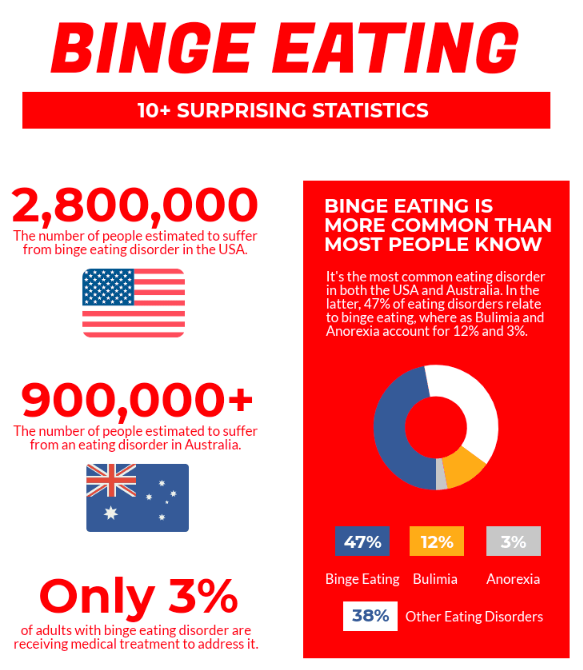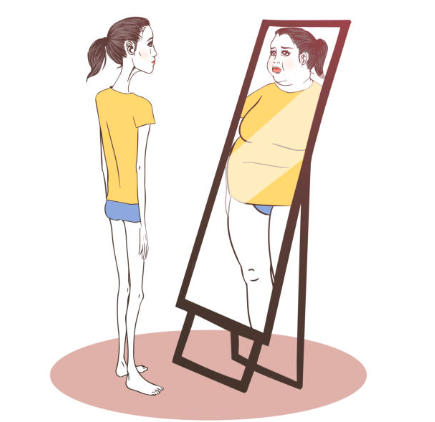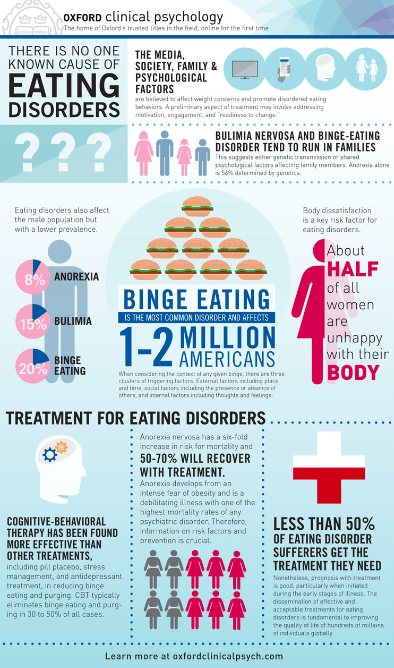body image & eating disorders
Our body is our primary tool, which we utilize to interact with the physical world. Moreover, it has the potential to influence not only how we relate to and perceive others but also how they visually perceive us.
The way we see our physical body, and the thoughts and feelings that arise out of it is what we call Body Image.
For both men and women, the way we perceive our appearance impacts the image we hold of ourselves and consequently, our self-esteem, relationhips and life-quality.
A positive body image involves feeling comfortable, confident, and satisfied with one’s body, regardless of societal ideals or external pressures. On the other hand, a negative body image can lead to feelings of dissatisfaction, self-consciousness, and even body-related anxieties.
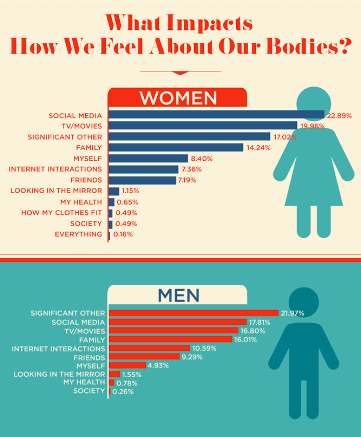
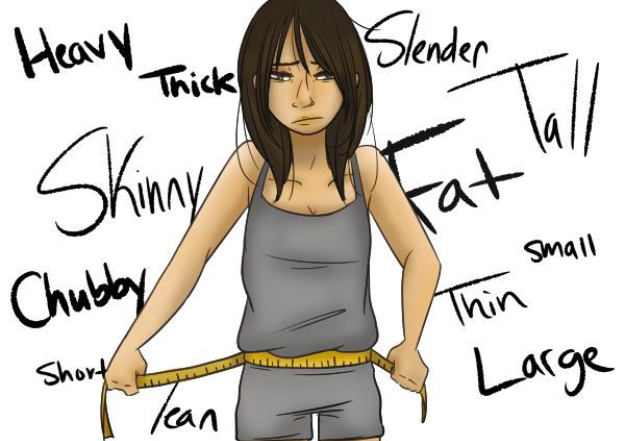
Social media has had a significant impact on body image perceptions and attitudes, both positive and negative. Due to the idealized images that it promotes, which are unrealistic images of beauty and body perfection. Platforms like Instagram and Facebook are filled with edited and curated photos that can create a distorted sense of what a “perfect” body should look like.
As humans we tend to compare ourlseves to others. It is part of our nature. However, constant exposure to carefully curated images can affect negatively our self-esteem and body image.
On the positive side, social media has also facilitated the body positivity movement. Many individuals and groups use social media platforms to challenge traditional beauty standards and promote self-acceptance, diversity, and inclusivity.
Because of the social pressure, and therefore anxiety that we might feel around our body-image, we can develop certain disorders.
According to the DSM-V (Diagnostic and Statistical Manual of Mental Disorders, 5th Version) some of them are:
BINGE EATING
A) Binge Eating: It is characterized by recurrent episodes of consuming large amounts of food within a short period of time, often accompanied by a lack of control and a feeling of distress afterward. The estimated lifetime prevalence of BED in the general population is around 1.2% to 3.5%.
Binge-eating episodes are associated with three (or more) of the following:
- Eating much more rapidly than normal.
- Eating until feeling uncomfortably full.
- Eating large amounts of food when not feeling physically hungry.
- Eating alone because of feeling embarrassed by how much one is eating.
- Feeling disgusted with oneself, depressed, or very guilty afterward.
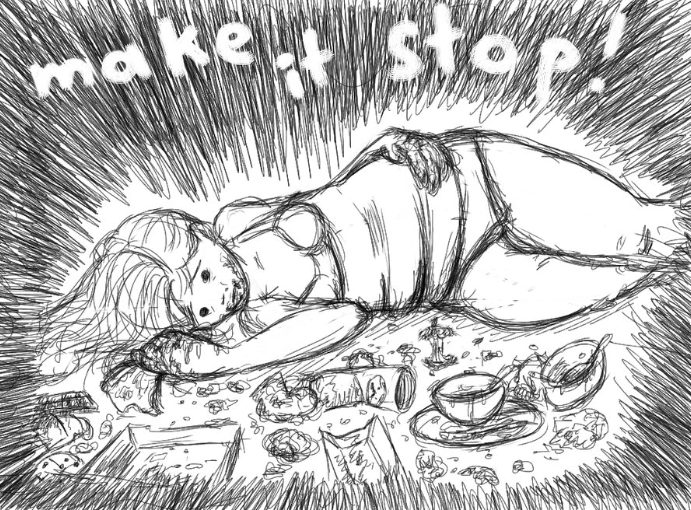
BULIMIA
B) Bulimia Nervosa, or Bulimia, is an eating disorder characterized by recurring episodes of binge eating, followed by compensatory behaviors to prevent weight gain (vomiting, excessive exercise, fasting, or misuse of laxatives, diuretics, or other medications). The Diagnostic and Statistical Manual of Mental Disorders, Fifth Edition (DSM-V), outlines the diagnostic criteria for bulimia nervosa:
The DSM-5 distinguishes between two types of bulimia nervosa:
– Purging Type: Engaging in self-induced vomiting or the misuse of laxatives, diuretics, or other medications.
– Non-Purging Type: Using other inappropriate compensatory behaviors, such as fasting or excessive exercise, without regular purging.
Bulimia nervosa can lead to a range of physical and psychological complications, such as electrolyte imbalances, gastrointestinal problems, dental issues (due to frequent vomiting), dehydration, heart problems, depression and anxiety and social isolation.
ANOREXIA
C) Anorexia Nervosa, commonly referred to as anorexia, is a serious and potentially life-threatening eating disorder characterized by a relentless pursuit of thinness, an extreme fear of gaining weight, and a distorted body image. Individuals with anorexia often engage in restrictive eating, leading to significant weight loss and malnutrition. Anorexia can have severe physical, emotional, and psychological consequences.
The Diagnostic and Statistical Manual of Mental Disorders, Fifth Edition (DSM-5) outlines the diagnostic criteria for anorexia nervosa:
1. Restriction of Energy Intake: The person persistently restricts their food intake, leading to significantly low body weight relative to their age, sex, developmental trajectory, and physical health.
2. Intense Fear of Gaining Weight or Becoming Fat.
3. Disturbance in Self-Perceived Weight or Shape: Distorted self-perception of one’s body weight or shape.
Anorexia nervosa can lead to a range of physical and psychological complications, including:
– Severe malnutrition
– Dehydration
– Electrolyte imbalances
– Heart problems
– Gastrointestinal issues
– Bone density loss
– Depression and anxiety
– Isolation and social withdrawal
– Obsessive-compulsive tendencies
– Suicidal thoughts.
D) Other types of eating disorders are:
Pica: Also not officially recognized as an eating disorder in the DSM-5, pica involves consuming non-nutritive, non-food substances, such as chalk, dirt, or paper. It’s more common in children and individuals with developmental disorders.
Rumination Disorder: Involves regurgitating food after eating, re-chewing, re-swallowing, or spitting it out. This behavior is not due to a medical condition and often occurs within 30 minutes of eating.
- Avoidant/Restrictive Food Intake Disorder (ARFID): Involves limited food choices, avoidance of certain textures, colors, or smells, and restricted calorie intake. Unlike anorexia, the primary motivation for avoiding certain foods is not related to body image concerns.
BOOK APPOINTMENT & INFO
Together we will find the way to help you
- Call us: 0451344805
- +61451344805
- [email protected]
- ps_constanza
- 410/251 Oxford Street, Bondi Junction, 2022

